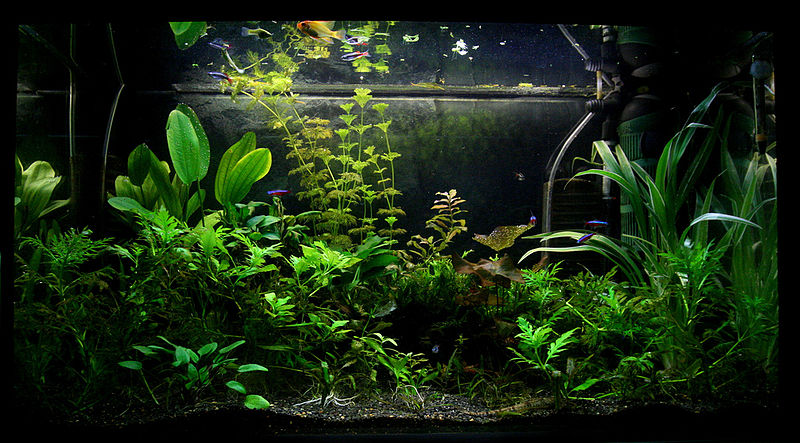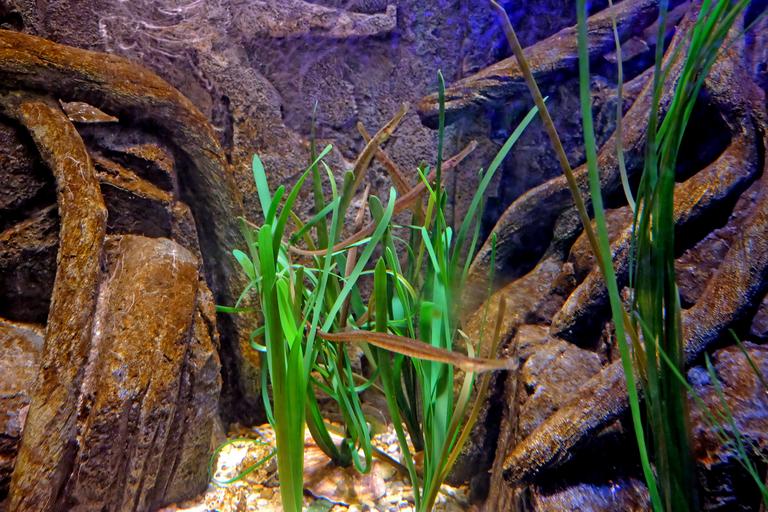Are you looking for a new hobby that is both fun and rewarding? Have you considered starting a planted aquarium?
Not only do plant aquariums look beautiful, but they can also provide a healthy and stimulating environment for fish and other aquatic creatures.
Starting a planted aquarium may seem intimidating, but it’s easier than you might think.
This guide will walk you through creating a thriving planted aquarium.
So whether you’re a beginner or an experienced aquarium hobbyist, we’ve got you covered.
But first, let’s talk about why you should consider a planted aquarium in the first place. Not only do plants provide aesthetic benefits, but they also play a vital role in maintaining the health of your aquatic environment.
They absorb nutrients and oxygen while releasing carbon dioxide, which helps balance your aquarium’s ecosystem.
In addition, live plants can provide hiding places and food sources for fish and other aquatic creatures, making them feel more at home in their new environment.
So, are you ready to dive in and learn how to start a planted aquarium? Let’s get started!
Why should you have a planted aquarium?
Now that you have decided to start your planted aquarium, it’s time to gather the necessary materials.
First, you will need an aquarium tank. The tank size will depend on your available space and how many plants and fish you plan to keep.
Remember that the larger the tank, the more stable the environment will be for aquatic life.
Next, you’ll need a substrate for your plants. This material will line the bottom of your tank and provide a surface for your plants to root in.
A popular choice for planted aquariums is aquarium soil or substrate for live plants. Choosing a nutrient-rich substrate that won’t cloud the water is essential.
You’ll also need lighting for your plants to thrive. The type of lighting you choose will depend on the types of plants you plan to keep.
Some plants require high-intensity lighting, while others can survive with lower light levels. It’s best to research the specific needs of the plants you plan to keep before choosing a lighting system.
Lastly, you’ll need plants! When selecting plants, consider the types of fish you plan to keep, as some fish may nibble on or uproot certain kinds of plants.
Also, choose plants that are easy to care for and appropriate for the size of your tank.
Gathering all the necessary materials may seem overwhelming, but don’t worry!
Once you have everything you need, setting up your planted aquarium will be a fun and rewarding experience. Let’s dive in!
Setting up Your Planted Aquarium
Now that you have all the necessary equipment, it’s time to start setting up your planted aquarium. Here are the steps you need to follow:
- Rinse your aquarium and all the equipment with clean water. Avoid using soap or other cleaning agents, which can harm your fish and plants.
- Fill the bottom of your aquarium with the substrate. The substrate should be at least two inches deep and designed explicitly for planted aquariums. This will provide a solid foundation for your plants to grow in.
- Install your heater, filter, and any other equipment you may have. Make sure to follow the manufacturer’s instructions for each piece of equipment.
- Fill your aquarium with water. Make sure to add a water conditioner to remove any chlorine or other chemicals that may be harmful to your fish and plants.
- Install your lighting system. Your lighting should be on for 8-10 hours daily to give your plants the light they need to grow.
- Add your plants. You can start with just a few plants and add more later as you gain more experience. Make sure to choose plants that are compatible with the type of fish you have and the conditions in your aquarium. You can use plant anchors or weights to keep your plants in place.
- Add your fish. Make sure to introduce your fish slowly and monitor them closely for signs of stress or illness.
Setting up a planted aquarium can be tricky initially, but with patience and practice, you’ll soon have a beautiful and thriving ecosystem in your home.
Adding the Plants
Now comes the fun part – adding the plants to your aquarium! Here are the steps you should follow:
- Rinse the plants: Before adding the plants to your aquarium, it’s a good idea to rinse them off in a bucket of dechlorinated water. This will help remove any dirt, debris, or pests on them.
- Plant the plants: Once rinsed, you can plant them in your aquarium. Use a pair of aquarium scissors to trim any dead or damaged leaves, and leave enough space between each plant, so they have room to grow.
- Add fertilizer: To help your plants grow healthy and strong, you’ll need to add some fertilizer to the water. Many different aquarium plant fertilizers are available, so choose one appropriate for your plants.
- Adjust the lighting: Most aquarium plants need plenty of light to grow, so ensure your aquarium light is bright enough for your plants. If you need more clarification, consult the instructions that came with your aquarium light.
- Monitor the water: After adding the plants, keep an eye on the water quality in your aquarium. It’s normal for the water to become cloudy for a few days, but if the water remains cloudy or the plants start to wither, you may need to adjust the lighting, fertilizer, or water flow in your aquarium.
Adding plants to your aquarium can be a great way to create a beautiful and healthy environment for your fish. And with these simple steps, you can start your own planted aquarium in no time!
Maintenance and care
Congratulations, you’ve successfully set up your planted aquarium! Now, it’s time to maintain and keep it healthy for your plants and fish. Here are some tips on how to do just that:
- Check the water parameters regularly: As mentioned before, it’s essential to monitor the water parameters, including the pH level, nitrate and ammonia levels, and temperature. Test your water regularly to make sure it’s within a safe range for your aquatic plants and fish.
- Trim your plants: As they grow, they may become too large and overshadow the rest of your plants. Regular trimming will help maintain the appearance of your aquarium and promote healthy growth for your plants.
- Remove dead plant matter: Just like other plants, aquatic plants can die. It’s important to remove any dead or decaying plant matter from your aquarium as it can cause an increase in ammonia levels and affect the water quality.
- Perform regular water changes: Water changes are crucial in maintaining a healthy aquarium. Aim for a 20-30% water change every two weeks or more frequently if your aquarium has a heavy bio-load.
- Monitor your fish: Keep an eye on them to ensure they’re healthy and happy. Signs of stress or illness include lethargy, loss of appetite, and changes in behavior. If you notice these signs, act immediately to prevent further complications.
Following these simple tips, you can maintain a healthy and beautiful planted aquarium for years. Remember to enjoy the fruits of your labor and admire the beauty of your aquatic plants and fish.
Conclusion
Starting a planted aquarium can seem daunting, but with the correct information and a little patience, anyone can create a beautiful underwater garden. Here is a quick summary of the steps to get started:
- Choose your aquarium size and type.
- Select the suitable substrate and lighting.
- Pick out the perfect plants for your aquarium.
- Add decorations and accessories to complete the look.
- Maintain the proper water conditions and care for your plants.
Remember, having a planted aquarium offers a variety of benefits, such as improved water quality, reduced stress for your fish, and a beautiful aesthetic.
So be bold and give it a try and experiment with different plant species and design ideas.
With some basic knowledge and a little creativity, you can create a stunning underwater garden that will be the envy of all your friends. So take the plunge and start your planted aquarium journey today!



